Beauty is in the eye of the beholder. One man's trash is another man's treasure.
Two famous sayings, with the same message – people have different opinions. If that sounds obvious, that’s because it is, but it’s worth putting down on paper every once and a while. In the marketing sphere, creating a campaign that pleases everybody and generates binders full of coverage is the ultimate goal…but is that realistic or even possible? That’s an argument for another day, but it poses an interesting question. If we can’t please everybody, who do we please?
Depending on your business, or the client you’re working with, you will have market research, target demographics and personas explaining exactly what type of people are interested in your product, and thus who we want to “please” with our content.
Getting in front of these people then, is the goal, and one of the most effective ways of doing this is through PR… which means we need to get journalists to talk about us. Here’s where things get a little more complicated. Unfortunately, just because your content interests your audience, it doesn’t mean it will interest a journalist.
So, we not only need to take into consideration the wants and needs of our audience, but the wants and needs of particular publications and their journalists, because ultimately they hold the success of the PR campaign in the palm of their hand.
If we can do this, we’re in business. To do this you need to…
- Understand your audience
- Research target publications/create a media list
- Identify a shortlist of journalists
- Research their previous output/look for recurring themes
- Conduct further social media recon
- Finally, contact them!
Shall we get started?
Understand your audience
I touched upon this briefly above, but understanding what your target audience looks like, and more importantly what they read, is vital. The best way to visualise exactly who you’re trying to talk to is through the creation of personas.
These can be created by looking through purchasing data, social media insights and market research.
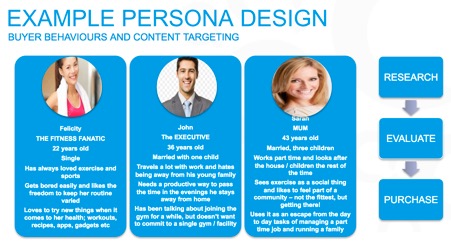
To help put your own together, Zazzle media have created a persona template which you can make use of in the button below:

Research Publications
Once we know what our audience looks like, we can start working out whereabouts on the web they spend most of their time. Our audience’s hobbies, average age, occupation, marital status and political views make a big difference when thinking about what publications to target.
A 19-year-old, single liberal who works as a social media executive will visit vastly different sites to a 43-year-old, married conservative who works as a sales manager.
Create a media list
Let’s take that first example. Even with that relatively small amount of information to go on, we can start piecing together an internet footprint for our 19-year-old subject, and from that create an initial media list to work from.
So what might that look like? Normally, we’d like to find 25-30 sites to work from, but you’re all busy people, so here’s a brief example of a media list below…
Broadsheets/News
- The Independent
- The Guardian
- BBC
- Daily Mirror
Trade News
- Social Media Today
- The Drum
- Hubspot
Entertainment
- Mashable
- The AV Club
- Shortlist
If you’re struggling to find sites, here are a few tools that can aid your search!
Gorkana
This is always our starting point when it comes to creating a media list. It has a vast array of publications that have all agreed to have their details included, thus we know are open to press releases & pitches. It has several filtering options which allow you to target accurately and will ensure you’re supplied with a list of relevant contacts. It also includes article topics publications are interesting in hosting, so we can tailor some content specifically for them.

Buzzsumo
A great tool for finding popular content. It also lists the amount of social shares these pieces have received. If a publication has produced a piece of content relative to your industry before, perhaps that’s an area they’re interested in, which means there’s an opportunity!

Web CRM
This is a bit of a cheeky inclusion, as it’s an internal tool Stickyeyes/Zazzle have created! Once again this is a very large database of sites, all with topics, metrics and measurements added to them. All we need to do is enter our keyword into the search bar and see what comes up!

Klear
This site has a variety of free social media analytics tools that can give you a list of top influencers, categorised and ranked either through skill or location.
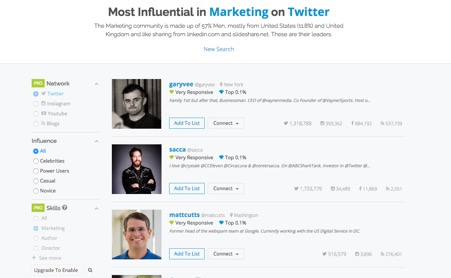
Journalist identification
Now that we have a media list, it’s time to find the journalists working in these outlets that we need to contact.
REMEMBER. Journalists are very busy, so pitching irrelevant content ideas to them, will not only result in no reply (or a negative one...) but could have you blacklisted as an organisation because of spam. It’s a cruel world out there.
This is where our research and investigation skills come into play. As I said at the start of this blog, depending on who you speak to, your content could be viewed as anything from terrible to incredible.
Here is a step by step guide to hunting down the right journo for the job.
Job title/Followerwonk
Let’s start off easy. If you’re promoting a startup working in the finance market, you don’t want to be talking to a fashion journalist.
“Now you’re just being silly Alex, I mean, nobody is going to email, say, the digital editor of Corps Magazine about lingerie. That would be ridiculous!”
…
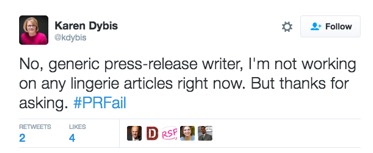
It happens all the time. Don’t believe me? Follow @SmugJourno on Twitter, and have a browse of the PR fails they retweet on a daily basis. Relevancy is key, and a job title, coupled with the genre of media outlet they work for, can give you a good indication of whether this journalist is worth investigating, or one to leave alone. This can also be done simply via a CRM system such as Gorkana, but if you’re after a free alternative and willing to do a bit of legwork, Followerwonk is a great alternative.
Followerwonk allows you to search for keywords that are included in a person’s Twitter bio. As journalists often list their job title and the outlet they work for in their bio, it’s a perfect tool for some investigation.
For our example, we want to find a financial journalist who works for an outlet on our media list, lets say the Daily Mirror.
To do this, we could type in “financial journalist” and “@DailyMirror” into the search bar or we could just search for the Daily Mirror money section’s Twitter handle - @MirrorMoney – and see who works on it.


From these two searches, we get five results. Two we can ignore (one is a former journo and the second is the section page) which leaves us with three hits. Emma Munbodh, Louise Croft and James Andrews.
Previous articles/Recurring themes
Now that we have a shortlist, it’s time to do some digging into our three journalists previous output. Personally, I like to go back and look through at least a couple month’s worth of articles.
Depending on the outlet size this can mean anywhere from 30 – 100 articles. This gives us a substantial amount of data to work with and can paint an accurate picture of what they will and will not accept from a PR perspective.
Most outlets have an authorship tag at the top of an article, clicking this will usually bring up a bio and a list of previous articles they have written.

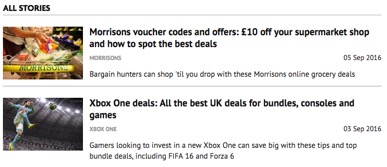
So what are we looking for whilst researching these articles?
- Are they specialists in any particular areas?
- Are they a news journo (focused on current affairs/trending topics)?
- Will they add links into their articles?
- Do they accept embeddable content? E.G. infographics.
- What content types are the most popular e.g. video, listicles, how to guides.
And most of all…
- Will they be interested in working with me on this campaign!
Further social media research
As we have seen above, most journalists have a Twitter profile. Skimming through their recent tweets will serve as helpful insight into their attitudes towards certain topics. The most useful thing to do is add their Twitter handle into the search bar and add “PR” next to it.
That way we can filter all their tweets regarding our profession into a handy list. If they have requested to be approached in certain ways (phone/email) we’ll know and if they have asked not be contacted between certain times, we’ll know!
‘Klear’ is a great place to start, a thorough analysis of their Twitter habits giving you an insight in to what they enjoy sharing. If they like sharing it, then pitch them it!
Just don’t go too far with this. No journalists appreciate being frightened by the amount of information you have on them!
Should I contact an editor or reporter?
There is no definitive answer to this question. It all depends on the size of the outlet and team. If an editor is working with a team of five or more, their duties are going to involve a lot of delegation and team management, meaning they may not have time to indulge your pitch request.
However, a reporter might be working on any number of story leads and may not be checking their emails far past your deadline. In my experience, it’s best to contact the ideal candidate based on the above research, and if they need sign off by an editor, or forward you on to a reporter they will!
When/how should I contact them?
Catching a journalist working to a tight deadline is the fastest way to find your email ignored, so timing is key.
Here are a couple of quick notes to bear in mind…
- Morning publications will have a late deadline, so morning is best.
- Evening publications will usually have a midday deadline, so afternoon is best.
- Some magazine titles work up to three months in advance, be sure to check this before pitching.
- Out of office hours are just that. Trying to be clever and pitch to a journalist on their down time is not appreciated.
How we contact a journalist is also important. It’s widely accepted that cold calling journalists one after another is not an efficient technique for both parties. Calling well known contacts is fine, but you’re not selling PPI…so no cold calling. Stop it.
I always find an initial email to pitch an idea is the best form of approach. If you get a positive reply, saying they’re potentially interested, then a follow up call is the best way to proceed.
Pitch email > Chase email if no response > Call to flesh out the ideas if interested
What if I can’t find an email address?
A few publications hold their cards close to their chests when it comes to their journalists contact details. Which makes our jobs a little tricky… it’s lucky then that there are ways to get around this. Here are my two favourites.
-
Twitter Search Bar
Did I mention journalists love social media? And why wouldn’t they? They get to promote their stories, entertain themselves and source new contacts! That last point is the most important one, because it means they need to send over contact details to people. A quick search of a journo’s Twitter handle followed by “email” will usually reveal these efforts, and their email.
-
Email structure search queries
Most large media organisations (trinity mirror/express group) have a uniform email addresses structure. For example, at Zazzle Media ours is firstname.lastname@zazzlemedia.co.uk.
A quick google search using different combinations of the journalist’s name will find (if there is any) any references to that email in Google.
site:mediatitle.com + ajones@mediatitle.com
site:mediatitle.com + alex.jones@mediatitle.com
site:mediatitle.com + alexj@mediatitle.com
site:mediatitle.com + alexjones@mediatitle.com
site:mediatitle.com + alex@mediatitle.com
Media Requests/ #JournoRequest
Sometimes the internet can do your job for you. It can even find a journalist crying out for content, that you can easily supply. Hallelujah.
Journalists in need of a source or further information will often use the hashtag #JournoRequest to seek help from PR’s or the general public. The very least we can do is help them out!
Sending a genuinely useful email in response to one of these requests will grant you an immediate relationship with that journalist, and your client with a golden opportunity of some coverage. And who said PR was difficult?
#SlowNewsDay
Sometimes a newsroom can be a boring place. If you search for this hashtag and see a journalist complaining about a lack of news, chances are your amazing content might just shoot to the front page.
Rewards
So what is all this effort in aid of? Coverage of course!
Here are a few examples where targeted PR has resulted in great success!
Child Maintenance – AOL Money
Financial advisors PayPlan asked us to create a campaign promoting a child maintenance hub they had created in order to help single parents with their money worries. After collating some statistics and creating a release, we put together a media list and began our research.
AOL Money ticked all the boxes, a major media outlet, with the correct target audience demographic who were genuinely interested in consumer news that affected the vulnerable members of society.
Casting an eye over their editor, Rosie Vare’s past articles, we discovered a hard hitting statistic often featured as the headline, and so we set about offering up the information in a format that would suit her.
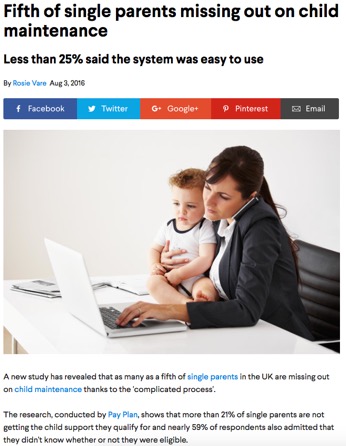
And it worked a treat! A relevant article their audience would be interested in, led by a hard hitting headline.
Unusual European Driving Laws – Lonely Planet
Auto dealership Jennings Motor Group asked us to help promote an infographic they had created on unusual European driving laws. Immediately, our attention turned to the automotive press and the travel press.
One of the big players in the travel niche are Lonely Planet, who just so happen to have a “weird, odd& just plain fun” category for some of their news articles. We felt unusual driving laws would fit nicely under this category.
After looking through, we found that a journalist called Andrea Smith contributed quite a lot of articles to the category, and so we began curating the pitch for her…
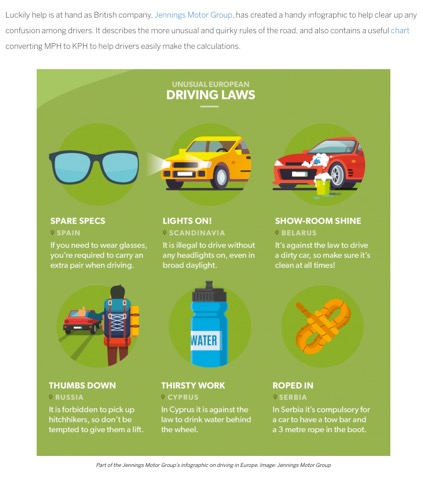
Andrea loved the content, as it was both unusual and useful. A winning combination for any piece of content.
So there you have it, a guide to finding your perfect journalist. Have you got any tips of your own? Let me know in the comments below and share your success!
Sign up for our monthly newsletter and follow us on social media for the latest news.
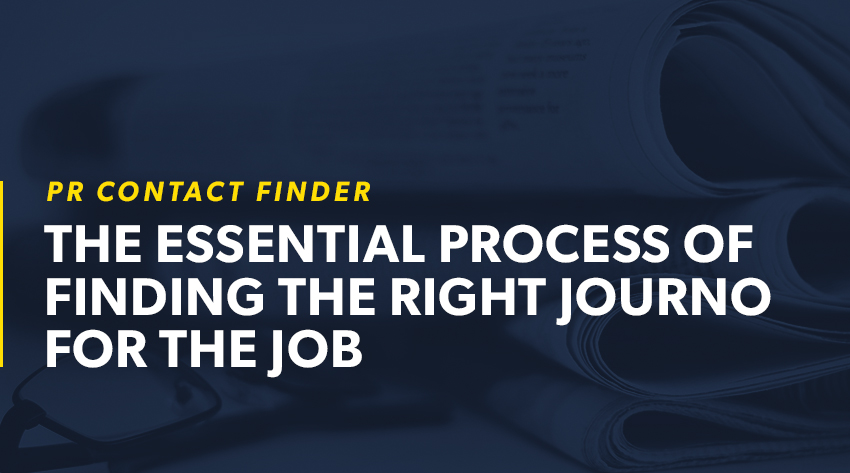




 Proudly part of IPG Mediabrands
Proudly part of IPG Mediabrands